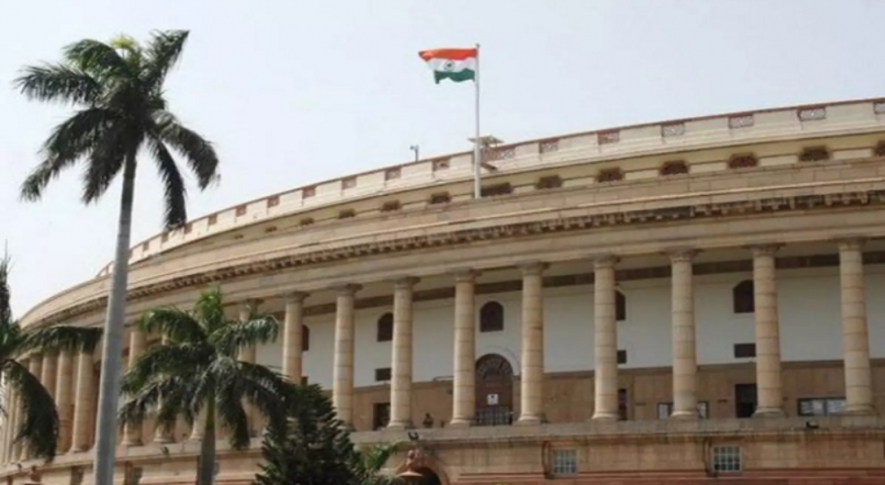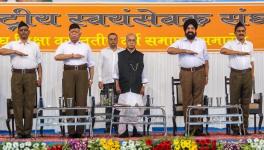Book Review: Joya Chatterji’s Shadows at Noon

Extraordinary historian Joya Chatterji’s latest book, Shadows at Noon: The South Asian Twentieth Century, is an unusual and genre-defying historical account of twentieth-century South Asia. All her books and essays testify to her tremendous rigour in research. Among historians, the lucidity of her prose and strength of analysis based on the unusual evidence she discovers get her wide appreciation.
In her first book, Bengal Divided (1995), Chatterji added significantly to the historiographical perspectives about India’s Partition. Her next book, Spoils of Partition (2007), again focusing on West Bengal during the first two decades of the post-independence and partition eras, was equally captivating.
Her latest work stands out in many ways. There are numerous textbooks by outstanding historians on India since 1947, such as India Since Independence by Bipan Chandra et al., India After Gandhi by Ramchandra Guha and Ayesha Jalal and Sugata Bose’s slim book Modern South Asia. Yet, Chatterji’s effort demonstrates exceptional qualities, including telling a story in which the author is an actor and spectator of events. Does it make her account less of a historical piece and more of a subjective narration of a memoirist: a life writing? It does not.
As a professional historian, Chatterji gathers field notes and oral accounts with acumen, other than accessing archival evidence and secondary works demonstrating deep investment in her area of interest. At times, this book reminded me of Eric Hobsbawm’s The Age of Extremes, a narration of events of the twentieth century.
Chatterji has dedicated her book to her students, who, she declares, “one learns far more from” than one teaches. Page after page, this affection for her students shows itself, demonstrating her commitment towards students beyond the classroom. Conventional post-1947 accounts of history usually remain confined to political, economic and administrative affairs. This book discusses theatre, cinema, sports, cuisines, family, household affairs, and the anxieties and vulnerabilities of different classes, such as slum dwellers, domestic help, and women, at length. Hers is a social account of history. For this author, who has taught the post-1947 history of India at the postgraduate level for a long time, this book provides remarkable insights into South Asia’s society, culture, economy, polity and administration. On some themes, inadequacies do show up, yet this 850-page volume is a valuable addition to the literature for students, teachers and non-specialist readers. The racy, captivating prose reads like a novel not to be put down.
One of its seven chapters is devoted to the crucial issue of migration, displacement and diaspora, which are her particular research interests. However, “long-distance nationalism’’, through which jingoism and xenophobia spread across the Indian subcontinent (which Western historians prefer to call South Asia), is a little less attended to. A question must be asked: Why do expatriates tend to be xenophobic? The funding of saffron majoritarianism by the diaspora, more intensely since the 1970s, is almost skipped as a topic, though the best-known work on this problem is by Chatterji’s students, the 2018 essay “Smugglers of Truth’’, published by the formidable journal of Cambridge University, Modern Asian Studies (MAS), of which she is currently the editor.
The Emergency, India’s brief spell with authoritarianism, is often treated as similar or comparable with the frequent long spells of military rule in two other South Asian countries, Pakistan and Bangladesh. It is an uncomfortable notion. Moreover, a little more could—and should—be said about the Emergency and its fallout.
Chatterji clarifies that the preponderance of the military in Pakistan was inherent in the chaotic Partition. The skewed balance of military versus civilian administrators that both countries ended up with has made the military congenitally dominant in Pakistani affairs.
India’s relatively better, though far from satisfactory, score in social justice matters related to its historically oppressed communities has also been ignored. Possibly because of steps akin to affirmative action, such as the partial implementation of the Mandal Commission, the social composition of India’s educated and bureaucratic elite changed dramatically. Unlike its two cousin countries, in India, some men and women from the oppressed communities rose to become chief ministers. In this regard, it stands out compared with the other two countries Chatterji has examined. Bangladesh’s better performance in rural development and alleviating rural poverty, mainly through the micro-finance schemes launched by Fazle Abed and Muhammad Yunus, have been well acknowledged.
In all three countries, religious reactionaries put up internal resistance to the reforms in the personal laws of the Hindus and Muslims carried out in the initial post-Partition eras. The resistance was most pronounced when it came to gender parity issues. This aspect has been mentioned in passing.
In terms of interpreting the character of the nation and the state through Bollywood films, some crucial research is ignored, such as the essay (MAS, 1992) by Akbar S Ahmad and Sumita Chakravarty’s books such as National Identity in Indian Popular Cinema, 1994, and Jyotika Virdi’s The Cinematic ImagiNation, 2003. These works and an essay by Shyam Benegal tend to argue that Nehruvian Secularism and related social aspirations were also promoted through Bollywood movies and songs, such as the issues of untouchability, industry-labour conflicts, peasant-landlord conflicts, peasant-moneylender conflicts, persuasions to control the population by having just two children, and cross-class love affairs.
Joya writes about one often-discussed theme in Bollywood, the rise of the ‘Angry Young Man’ in the 1970s: “Scholars argue (with rare unanimity) that the emergence of the ‘Ángry Young Man’ movies starring Amitabh Bachchan has to do with the imposition of Emergency in India… and the general public disenchantment with politicians and the nation-state. There may be something in this. But as a historian, I can’t help regard it as another teleology: an imposition of conclusions of the future (always in disequilibrium) upon the past”.
Joya asserts that films such as Zanjeer, Deewaar, and Sholay were made or already in the making before the Emergency was imposed in 1975. She points out that Bachchan was close to Indira Gandhi. Her point becomes clearer: “The malaise these films cast in sharp relief was that of a generation of immigrants in the city, whose dreams of a better life had come to nought. They had no villages they could remember without pain and no futures they could look to with hope. These movies must be viewed as films about Bombay as a hub of immigration from south, north, west and east.”
Two chapters in the book are dedicated to films, but soap operas have been given a miss, possibly because the latter was more noticed in the 2000s than until the 1990s when the book concludes. Another omission is creative literature since 1947, a subject understandably tricky for historians to delve into, not least because of the numerous languages that flourish across the subcontinent. Some fiction writing in the major languages of India, Pakistan and Bangladesh could still have been analysed.
What Chatterji never shies away from is exposing the colonial state’s failings and atrocities; even post-colonial South Asian states remain oppressive, violent, discriminatory, and filled with the arrogance of power and ethnocentrism. Factors that have generated regional imbalances and secessionists have also been touched upon. On certain counts, Chatterji punctures the edge India claims over its neighbours. The menacing phenomenon of competitive “sub-continental majoritarianism”, inherent in the notions of recent citizenship discourses, is very well brought out: For instance, the dangers of sectarian strife from a faith-based determination of citizenship; Pakistan’s blasphemy laws which declare the Ahmadiya (Qadiani) as infidels to be killed; and the oppression and vulnerability of the Shias. Islamic radicals often kill people in the masjids of these sects during Friday prayers. The drastic fall in the Hindu population of Bangladesh is a concern raised in the book.
The choice of title allows one to conjecture about its central concerns and subtext. At least two novels had the title “Shadows at Noon”. One was written in 1943 by Martin Goldsmith (1913-1994), a dreamy what-if novel on what happens after the Nazi bombing destroys New York City, and the other is a 2019 novel by Margot Webb dealing with Nazi oppression as experienced by a 10-year-old girl. The title thus forewarns us about South Asia’s rapid slide into what one may call “electoral ethno-authoritarianism”. [The author uses the term ethnocentric nationalism].
More care was required in stating the facts on some occasions. For instance, in the epilogue, on the question of Gandhi’s assassination, the myth that the Rs 55 crore is to be given to Pakistan as being one of the reasons has crept into this book. Gandhi didn’t really raise the issue of Rs 55 crore, not even in his Delhi prayer meetings in January 1948. This was a post facto argument put forward by Nathuram Godse during the trial. Their plan to kill Gandhi was underway for long (in 1932, in June-July 1934, in July 1944, and a cartoon of Gandhi with ten heads of his companions, likened to Lanka’s demon Ravana, published in 1945 in their mouthpiece, Agrani, amply testify this). On the Shah Bano issue of 1986, the author maintains that impending elections were the populist consideration before the Rajiv Gandhi administration. Indeed, elections were over three years away. Perhaps future editions can address such concerns, especially as this book could become extremely popular.
In a gloomy era for the subcontinent, a highly accomplished historian writing an immensely readable book matters for academics and all others keen on sub-continental history.
The author teaches modern and contemporary Indian History at the Aligarh Muslim University. The views are personal.
Get the latest reports & analysis with people's perspective on Protests, movements & deep analytical videos, discussions of the current affairs in your Telegram app. Subscribe to NewsClick's Telegram channel & get Real-Time updates on stories, as they get published on our website.
























